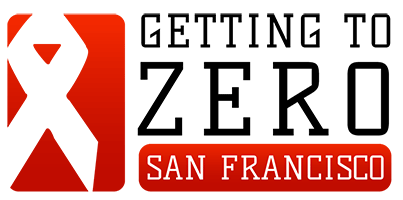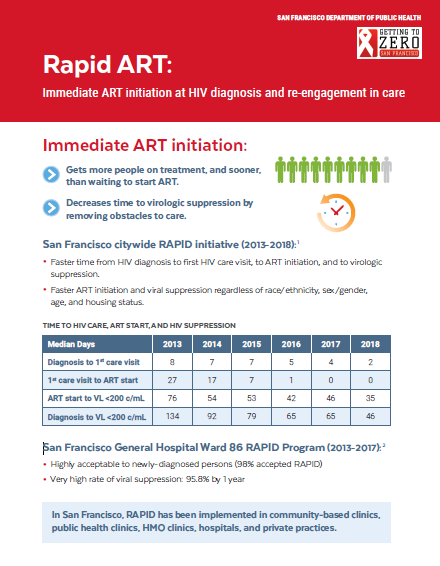[New Publication] Development of a Citywide Rapid Antiretroviral Therapy Initiative in San Francisco

San Francisco Ending the HIV/HCV/STI Epidemics (ETE)
September 17, 2021
San Francisco: Golden Compass
December 1, 2021[New Publication] Development of a Citywide Rapid Antiretroviral Therapy Initiative in San Francisco
Oliver M.L. Bacon, Susa C. Coffey, Ling C. Hsu, Jennie C.S. Chin, Diane V. Havlir, Susan P. Buchbinder, Development of a Citywide Rapid Antiretroviral Therapy Initiative in San Francisco, American Journal of Preventive Medicine, Volume 61, Issue 5, Supplement 1, 2021, Pages S47-S54,
ISSN 0749-3797, https://doi.org/10.1016/j.amepre.2021.06.001.
(https://www.sciencedirect.com/science/article/pii/S0749379721003615)
Introduction
Ending the HIV epidemic in the U.S. holds rapid antiretroviral therapy as a key strategy to improve the health of those with HIV and to decrease transmission. In 2015, Getting to Zero San Francisco, a multisector consortium, expanded rapid antiretroviral therapy citywide.
Methods
A Getting to Zero San Francisco Rapid ART Program Initiative for HIV Diagnoses Committee (academic, community, service delivery, health department partners) designed the program, protocol, dissemination plan, and monitoring strategy. Newly diagnosed patients were linked to an HIV medical home or Rapid ART Program Initiative for HIV Diagnoses initiation hub to best deliver rapid antiretroviral therapy across a diverse patient mix, with a goal of ≤5 working days from diagnosis to care and ≤1 day from care to antiretroviral therapy. Stakeholders were trained on rapid antiretroviral therapy via Getting to Zero San Francisco meetings, in-services, public health detailing, and peer-to-peer recruiting, prioritizing HIV clinics serving patients of color, Latinx ethnicity, youth, and the uninsured or publicly insured. Rapid ART Program Initiative for HIV Diagnoses–specific metrics were derived from surveillance data; stratified by sex/gender, age, race/ethnicity, and housing status; and presented at public meetings. Data were analyzed between January and April 2021.
Results
From 2014 to 2018, median time from diagnosis to care decreased 71% (7 to 2 days), care to antiretroviral therapy decreased from 19 to 0 days, and diagnosis to virologic suppression decreased 51% (94 to 46 days). Improvements occurred regardless of age, race/ethnicity, sex/gender, exposure, or housing status.
Conclusions
During a citywide initiative to optimize antiretroviral therapy initiation, time from HIV diagnosis to care, antiretroviral therapy, and virologic suppression decreased across all affected groups to varying degrees. The Rapid ART Program Initiative for HIV Diagnoses Committee continues to address challenges to retention and expand implementation.
If you have questions, please contact Susa Coffey (susa.coffey@ucsf.edu), Co-Chair of the GTZ RAPID Committee.


